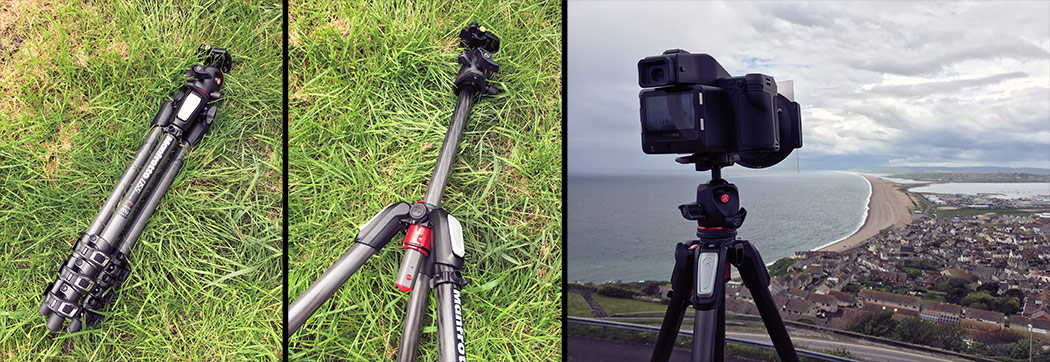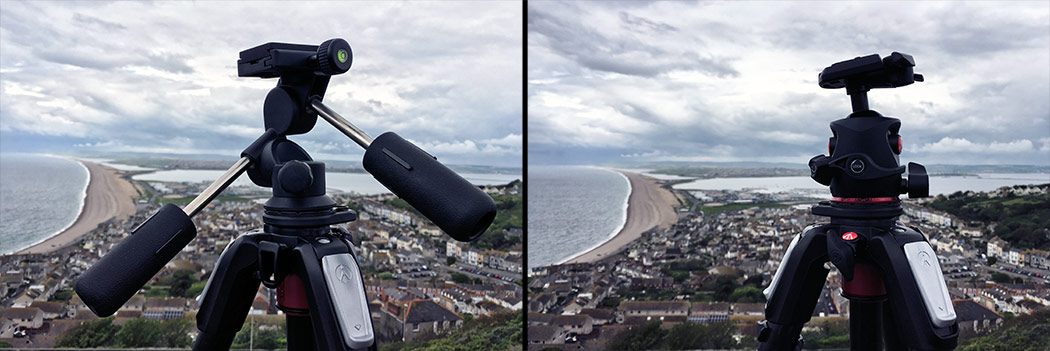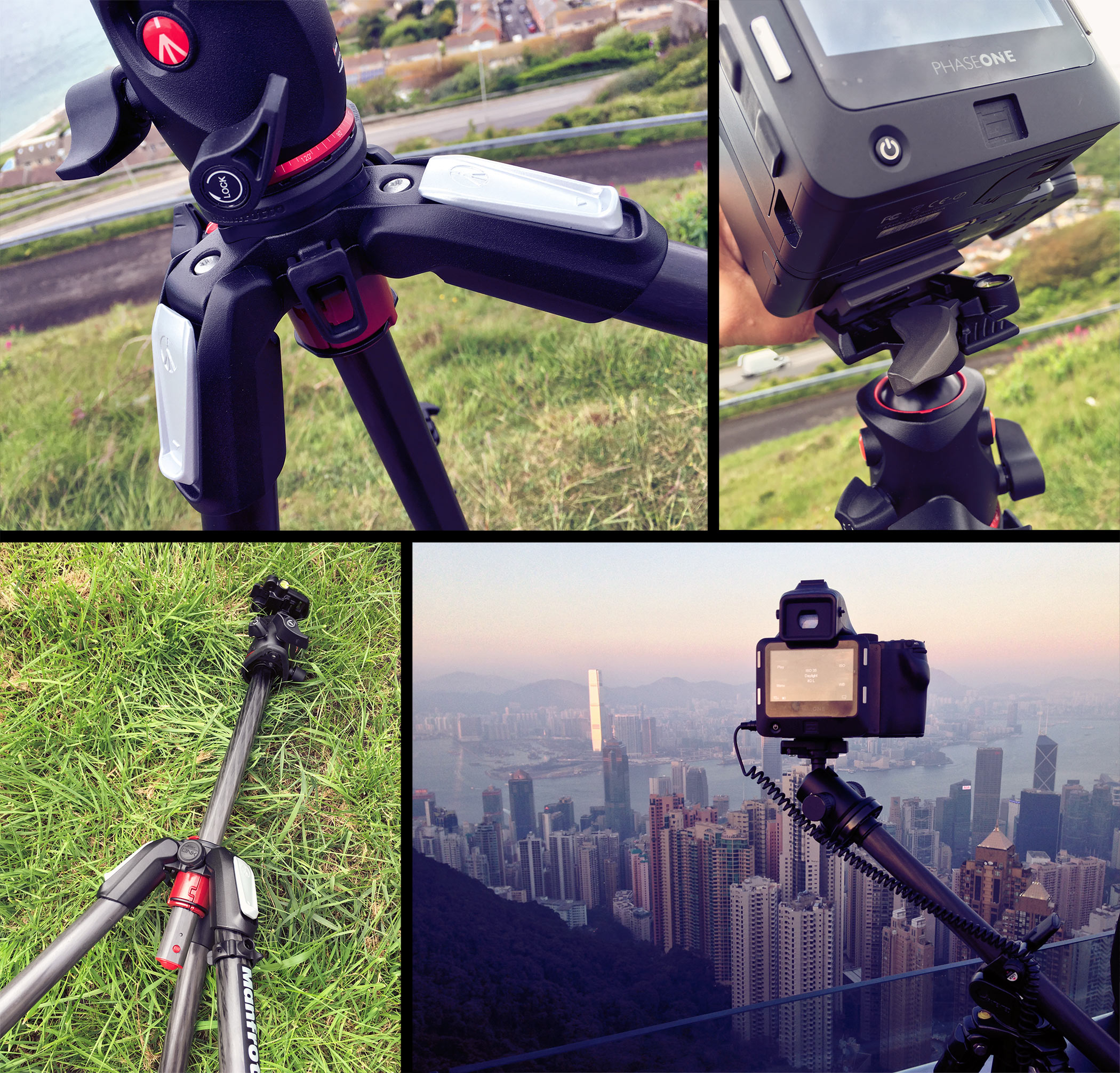I need a tripod – but which one?
In a market which is saturated with manufacturers and all their unique solutions, choosing the right tripod can be almost as tricky as the decision making process that went in to buying your camera.
There are so many confusing options out there and I’m often asked “which is the best tripod?”, but the answer is never a simple one. The tripod that is best for me is based on my own shooting style and what is right for me will not be right for others, so it can all get rather complicated.
Our tripods are responsible for holding expensive camera equipment high off the ground. Without them, long exposures are rendered impossible and holding heavy kit in the air manually for long periods of time is not an ideal alternative.
You must also remember, just like your camera, a tripod is an investment and therefore you should always buy the best you can afford. A good tripod will last for years even with heavy use, a bad tripod can make every shoot frustrating and in the worst case, costly.
With tripod setups ranging from under £100 to over £1,000, there’s a lot of choice out there, so you need to look at a few specifics to make sure you are spending your money wisely. Here are some of my thoughts and tips on what to look for when buying a tripod which will hopefully point you in the right direction and help you reach a more informed decision on the best system for you.

The basics – key questions:
When purchasing a new tripod there are a few key questions you’re going to have to ask yourself:
- Am I travelling with this tripod?
- How high do I need to shoot?
- How heavy is my camera gear?
If you’re travelling with a tripod you need to think as practically as possible with regards to weight and size. Consider a 4-section tripod as this can fold up into a smaller space so is more sensible for packing in your suitcase.
Depending on how high you shoot, you may want to look at a tripod that has an extending central column. Just bear in mind when you use the centre column in its fully extended position your camera won’t be quite as stable and more vulnerable to the wind than it would be if your shooting position was lower down.
Taking into account the weight of your camera, heaviest lens, glass filter systems and holders, allow for a good margin between that weight and the tripod’s (both leg system and head’s) maximum load.

The legs:
Generally the most expensive part of the tripod setup are the legs, which add the most weight to your chosen system. The legs also affect how big (or small) the setup will be. Another decision to make with tripod legs is the material they are made from and again that will often depend on the style of photography you do and the situations you capture your images in.
I take my tripod into all kinds of environments – sand, ice, salt-water, mud and rocks, so I need to be confident my tripod can stand up to these harsh and extreme conditions. With that in mind, a tripod that rusts or cracks, in any area, is useless to me. Likewise, my tripod is always being packed into smaller and smaller cases, so weight is an important factor for my travels.
That being the case, a carbon fibre setup looks like an attractive option but there are also downsides to consider. As well as being expensive, a tripod that is too light is not ideal in certain situations. If there is too much wind, an ultra-light tripod may not be stable and therefore something with more substance is the better option.
Make sure you also check out the added features when looking around at all the different options:
- Foam pads on the legs themselves mean you’re not holding on to freezing cold metal or carbon when carrying your gear on winter shoots.
- Markings on the extensions can help save time by knowing you have all three legs positioned at the same length.
- Switchable feet (from round rubber to metal points) allow for better grip in icy conditions or when the ground isn’t stable enough to rest on.
Personally, I’ve always found a carbon fibre tripod to be the best option (finances permitting), but don’t rule out their aluminium counterparts – sometimes the added weight can actually help on a shoot.

The tripod head:
It’s a bad idea to spend a lot of money on a camera body only to put cheap lenses in front. The same rule applies to the head of your tripod, which is just as important as the legs.
The tripod head, as the moving part that connects the bottom of your camera to the tripod, is the piece of your system you will be using the most during the shoot, so finding one that is easy and comfortable to use is paramount.
While an element of this is personal preference, the choice really comes down to whether you need the rigid control of panning on one axis at a time (in which case, a pan/tilt head is ideal); or if you need the flexibility of changing the direction of your camera in any angle with only the release of one lever each time (in which case, a ball-head is your best option).
Having always used ball-heads and enjoying the flexibility and ease of use they provide, for me this is a simple choice – but for those looking to accurately stitch panoramas for example, the decision becomes slightly more complex.
If you’ve opted for a pan/tilt head, check the ergonomics and grips of the handles. Does it have spirit levels in the right place? Do you need a 2-axis or 3-axis movement? Are the handles rubberised, to keep grip in the cold and not freeze your hands when operating? Is the rotating mechanism smooth and positive?
For ball-heads, make sure the ball and pole are made from one piece of metal (cheaper ones can be found in two pieces, making them very weak under load). Does it have spirit levels in all the right places? Is there a friction adjustment to allow for tightening and loosening the movement when you release it? Can it flip the camera through portrait mode with a cut-out on one side? These are all essentials when it comes to making that selection.
Just as with the legs and base system, there is also a choice of materials for the head – from steel, to aluminium to magnesium alloy, to carbon. All have their weight savings and associated price impacts, but for me, this is one where you really have to give some options a try in the store first. When complete tripod systems range from 1.5kg to 7.5kg, there’s a huge variety out there, with prices to match.

The baseplate & Connector:
One thing I really am looking out for when choosing the head mechanism is a strong baseplate, secure connector and hassle-free quick-release function. Remember – this one piece of metal is the only thing keeping your camera safe up there – it’s essential and worth spending the money on getting the best you can afford.
Personally, I would never purchase a system that needs a screwdriver to attach and detach the plate to my camera – you’ll never find that screwdriver when you really need it. If using more than one camera, consider buying additional baseplates to save time and potential damage when swapping from one to another.
Some cameras have specific needs, for example the Arca-Swiss bodies and plates are better suited to a top-lock system, but in general a quick release standard plate is suitable for most DSLR and Medium Format setups.
Your baseplate should also come with both sizes of screw attachment – some cameras require 1/4” fixings, while others need a 3/8” connector – check this out before buying.

Flexible Centre Columns:
Any tripod with a central column gives you the ability to raise the camera higher than the maximum the three legs will allow – but do be careful, as it is not as sturdy up there as it is in its home position.
However, an essential ingredient to many of my shoots is also the ability to stretch the reach of my tripod over and across obstacles from time to time – not just up and down. I’ll often make use of the ability to bring the central column horizontally across the legs to get into a corner down low, or put the camera into a stable position where it’s not possible for me to be there too.
While not a new concept, different manufacturers have implemented this feature in different ways. Some have elected for a completely free movement once the column is out. Others (such as Manfrotto) allow it only to extend at 90 degrees to the base. Either way, the flexibility of being able to reach the camera away from the middle of the three legs is essential to my shooting style, and something I’ll always look for in a tripod.

Quick Release Legs:
I remember my first tripod – with three screw locks on each leg to be undone and fastened every time I wanted to extend the height. By the time I was finished setting up, with frozen fingers, others were already packing their gear away.
Those days are thankfully long gone. That said, while there are a wide variety of quick release systems out there, not all of them are good. Ideally, we’re looking for ones that have a positive “snap” into position when set, and are quick and easy to release while wearing gloves. The mechanism should be adjustable (usually with a hex key) to allow for the correction of natural wear over time and the components should be just as weather resistant as the tripod itself.

Adjustable Legs (Stability):
Sadly, we’re not all lucky enough to have photographic locations which are perfectly flat, level and obstacle free. We often find ourselves in situations where a rock is sat exactly where the last leg of our tripod was going to go, or on the edge of a ridge where there’s just not the right setup of ground beneath our feet.
This is where adjustable angles on the legs become critical. Not all tripods offer it as a feature, but they can be essential when it comes to getting into a stable position or setting up from a low angle. A simple system allowing for the change of angle with one click can be useful when setting up in a hurry, as can the built-in spirit levels on the head and top of the legs themselves.

Bag hooks:
Even with a sturdy tripod, sometimes you just want the reassurance of a bit of extra weight (within the maximum load of your system) to keep things in place.
Beyond that, there’s also the practical issue of not wanting to place your camera bag on a wet, muddy, floor. Look out for the option to hang your bag on the tripod itself – some offer it from the central column (which is, in my opinion, the better position) while others simply provide a hook from the top.
While this might seem like a small thing, it can be a big usability issue long-term.

Fixings are just as important:
Be very wary of bargain deals on carbon fibre or aluminium tripod systems.
What may look like high spec on paper is worth closer inspection before you take them for a dip in the water or out in the rain to shoot. Make sure you check out the materials used for the fixings and bolts that connect your tripod parts together.
Many manufacturers save money by using poor quality metals here that not only add unnecessary weight, but also degrade and rust over time. Make sure those shiny new clips stay that way by investing in the right gear – or you may as well stick with a cheaper option to throw away.
What do I recommend?
When it comes to landscape and cityscape photography, quite often I find myself and my camera equipment exposed to the elements in harsh climates or high places where gear failure is not an option. With that in mind, I rely on the best components, which are field-serviceable and reliable on every shoot.
I’m not looking for the lightest option, as I need a system that is rigid and strong under heavy load. I am, however, looking for a small pack-size with a good compromise of weight against strength.
With that in mind, here are my suggestions:
Legs/Base Setup:
For those looking for a great price/performance option, Manfrotto’s 190 series tripods tick the boxes for most DSLR setups across a range of environments. Consider whether you need the extra rigidity of a 3-section solution or the reduced packing size of a 4-section setup before making your selection.
While the aluminium options are still a fantastic alternative, carbon fibre pricing has reduced to the point where if you can afford to invest, it’s worth making that choice early-on.
For my own equipment setup, Manfrotto’s new “overpowered” 055 range, in carbon fibre, gives me the perfect combination of rigidity, flexibility, maximum load weight and height in a collapsible small 4-section package. While it’s not the lightest carbon tripod out there, this can actually be a benefit when shooting on windy days.
Tripod Head:
Without hesitation, I would recommend the Manfrotto MHXPRO-BHQ2 Magnesium Ball Head. Lightweight and compact, the latest heads have a smooth rotating action and much better friction control.
Where other manufacturers rely on round dials to release the grip, in the cold these can be frustrating and the XPRO head just feels generally better built and thought out.
Baseplate Option:
The 200PL connector from Manfrotto is a perfect mix of durability and size and is an item that is commonly stocked in stores around the world. As such, if something ever went wrong on a shoot the baseplate would be easy to replace. While the alternative top lock system has certain advantages, I’ve found the 200PL to be the perfect companion to my cameras in a form that works perfectly for my shooting style.

The right tool for the job
It is so important to make sure you arm yourself with enough knowledge and ask yourself the right questions when buying a new tripod system. Research what is available within your budget and match that to your own shooting style. Your tripod is an investment and holds the key to capturing sharp, clear, landscape images around the world.


